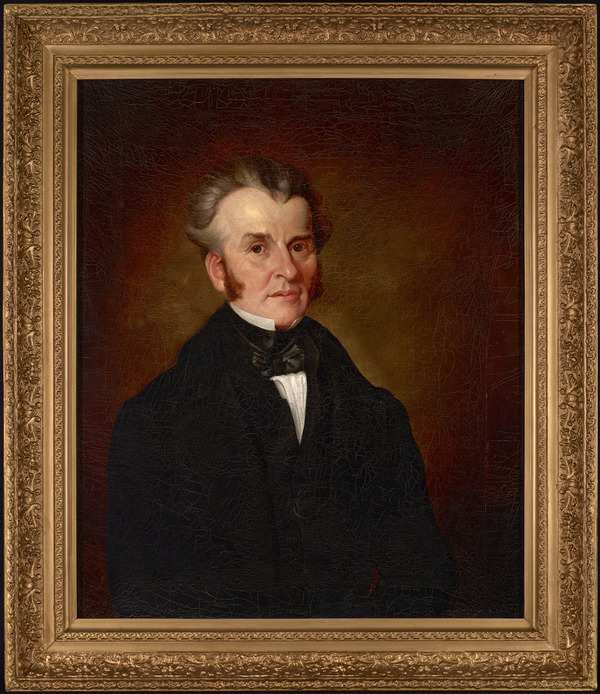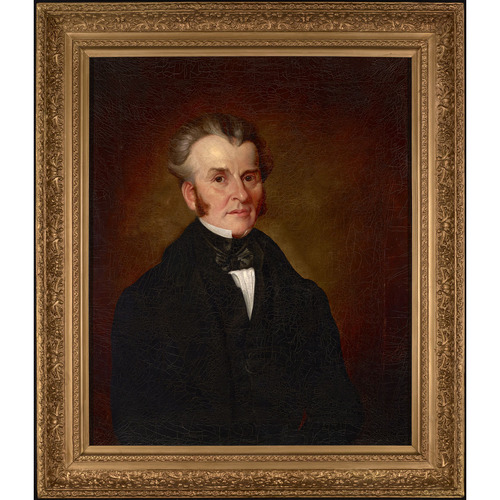RUTTAN, HENRY, soldier, businessman, legislator, author, and inventor; b. 12 June 1792 at Adolphustown, U.C., son of William Ruttan, a United Empire Loyalist of French ancestry, and of Margaret Steele; d. 31 July 1871 at Cobourg, Ont.
Henry Ruttan’s formal schooling, which was obtained at Adolphustown, ended at 14 when he left home to become a store assistant in Kingston. His boyhood on a farm being developed from the wilderness was, he later wrote, remarkably healthy and provided him with a robust constitution. During the War of 1812 Ruttan joined the militia, was commissioned, and served in Upper Canada. In 1814 he was severely wounded in the bitter fighting at Lundy’s Lane, but he returned to active service before the war ended. He continued to serve in the militia, in the 1st Battalion of Northumberland and after 1825, when he became colonel, in the 3rd Battalion. He left the active militia in 1846 but was recalled in 1860 to command the 4th Military District until 1862.
In 1815 Ruttan went into business in Cobourg. He was elected to the House of Assembly in 1820 as the representative for Northumberland, and served until 1824. During his second term, 1836–40, he was influential in having the Trent Canal started, and he replaced Allan MacNab* as speaker of the house from 28 Dec. 1837 to 24 Jan. 1838. Appointed in 1827 sheriff of the Newcastle District (which became in 1849 the United Counties of Northumberland and Durham), he held that office for 30 years; he also served on the Board of Agriculture for Upper Canada.
His autobiography, written in 1861, deals with the history of his family and with his experiences in war and in politics. It unaccountably makes no mention of his studies, perhaps the most comprehensive hitherto undertaken, of problems in the heating and ventilation of buildings or of his related inventions.
The conservation of fuel and the proper ventilation of houses were impossible to achieve with the inefficient fireplaces and stoves then in use. Ruttan began to design air heaters and ventilating equipment, for which he was granted seven patents between 1846 and 1858. His method, extensively used, for the combined heating and ventilation of buildings involved drawing in outside air through a duct. The air then passed by natural flow through a heater and circulated by convection through the various rooms, finally to flow through a duct to a foul-air shaft which sent it outside.
Ruttan also devised a system for the heating and ventilation of railway coaches. Outside air, forced through ducts into the cars by means of the train’s motion, passed through a wash tank which cleaned, humidified, and cooled it. In the winter the system was modified to heat the air entering the cars. Ruttan’s system, probably the first to provide an air-conditioned vehicle, was used by several railways in Canada and the United States.
In 1816 Ruttan married Mary Jones. They had nine children of whom Henry Jones continued his father’s interests in ventilation and was editor of the Cobourg Star from 1846 to 1855. In his 68th year Henry Ruttan was thrown from a carriage and suffered injuries from which he never fully recovered. Stricken six years later by a disease which gradually undermined his health, he died in his 80th year, thus ending the many-faceted and useful life of an intelligent man of good character.
PAC, MG 24, K2 (Coventry papers), 11, “Reminiscences of the Hon. Henry Ruttan of Cobourg,” pp.361–82. Other versions, with some changes, of this autobiography are: “Autobiography of the Honorable Henry Ruttan of Cobourg, Upper Canada,” copied by C. E. Thomson, United Empire Loyalists Assoc. of Ont., Trans., II (1899), 75–84; and Loyalist narratives from Upper Canada (Talman), 296–311. Henry Ruttan, Lectures on the ventilation of buildings, delivered at the Cobourg Mechanics’ Institute (Cobourg, C.W., 1848); Lecture on ventilation, delivered before the Cobourg Mechanics’ Institute . . . Feb’y 22, 1858 (Cobourg, C.W., 1858); Ventilation and warming of buildings . . . (New York, 1862). Cobourg Sentinel, 12 Aug. 1871. Armstrong, Handbook of Upper Canadian chronology. Can. biog. dict., I, 729–30. Morgan, Bibliotheca Canadensis, 329. Patents of Canada, I, nos.210, 222, 225, 244; II, no.311. Wallace, Macmillan dictionary, 659. E. C. Guillet, Cobourg, 1798–1948 (Oshawa, Ont., 1948), 23–25, 56.
Cite This Article
T. Ritchie, “RUTTAN, HENRY,” in Dictionary of Canadian Biography, vol. 10, University of Toronto/Université Laval, 2003–, accessed December 6, 2025, https://www.biographi.ca/en/bio/ruttan_henry_10E.html.
The citation above shows the format for footnotes and endnotes according to the Chicago manual of style (16th edition). Information to be used in other citation formats:
| Permalink: | https://www.biographi.ca/en/bio/ruttan_henry_10E.html |
| Author of Article: | T. Ritchie |
| Title of Article: | RUTTAN, HENRY |
| Publication Name: | Dictionary of Canadian Biography, vol. 10 |
| Publisher: | University of Toronto/Université Laval |
| Year of publication: | 1972 |
| Year of revision: | 1972 |
| Access Date: | December 6, 2025 |




